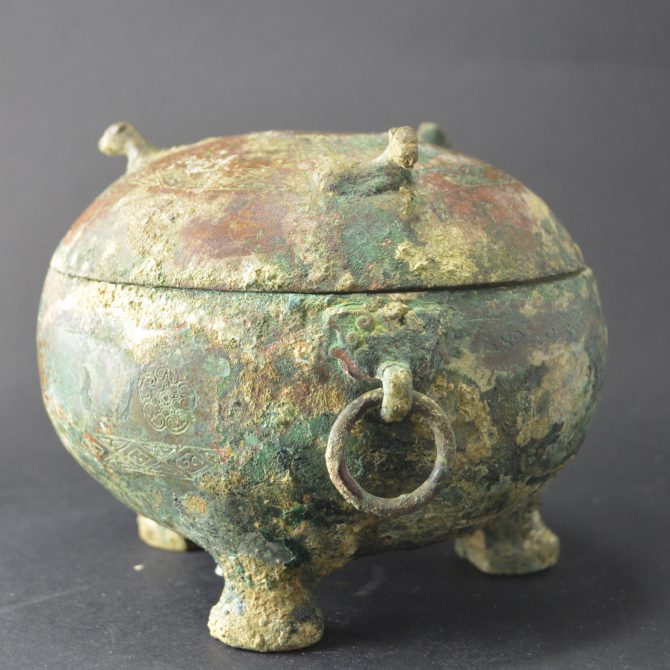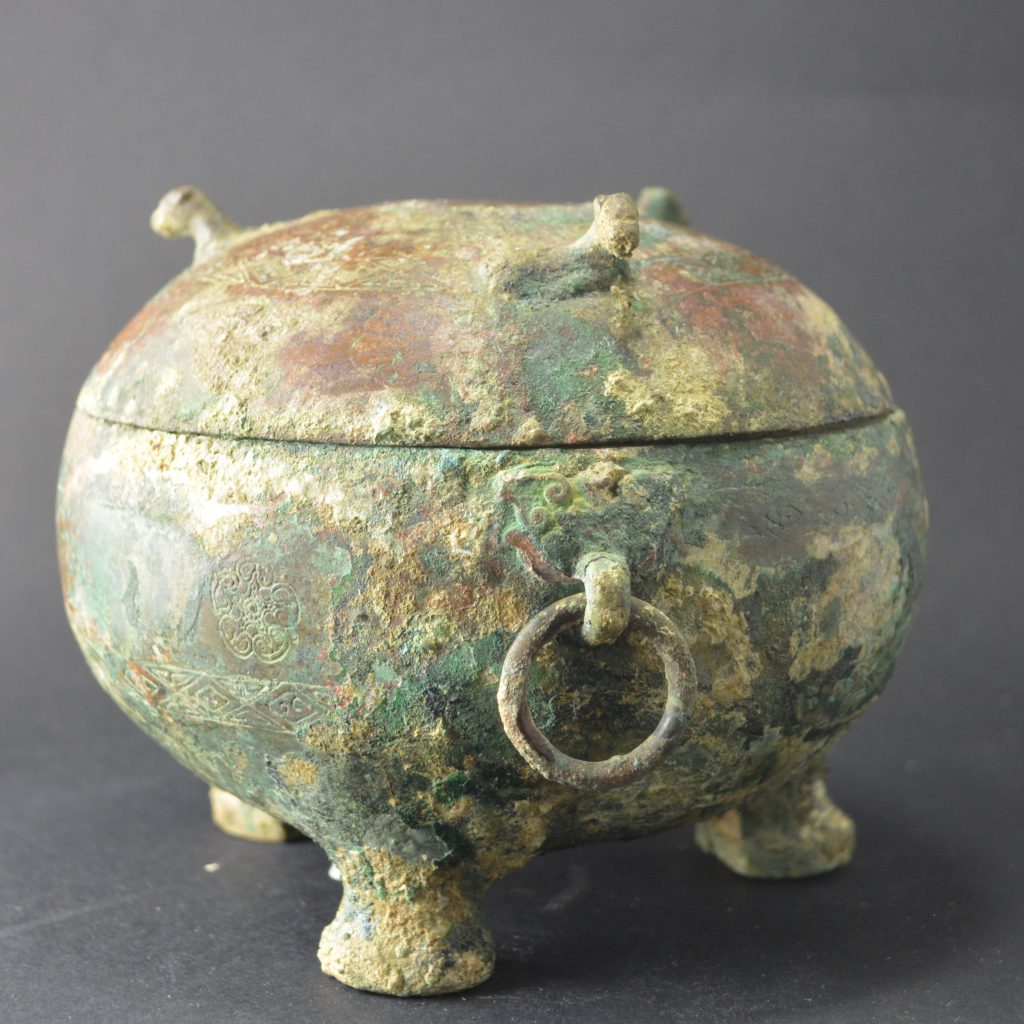
A Western Han Bronze ‘Ding’ (206 B.C.-A.D. 8)
A Western Han (206 B.C.-A.D. 8) Bronze Ding. This heavy ritual bronze with its bulbous body and three waisted legs and has delicately incised decoration to the surface. The cover, which doubles as a bowl, has three animals which are used as supports when the cover is everted and placed on a surface. Either side of the Ding are to loop handles supported by Taotie masks.
SOLD
- Condition
- In good condition. Extensively burial encrustations, some areas have had these reduced to show the decoration. Some areas have shed their top layer.
- Size
- Height 12.5 cm (5 inches)
- Provenance
- From a Private London Collection of Early Chinese Ceramics, formed between c.1970-1990.
- Stock number
- 702
Information
Ding : were prehistoric and ancient Chinese cauldrons, standing upon legs with a lid and two facing handles. They are one of the most important shapes used in Chinese ritual bronzes. They were made in two shapes: round vessels with three legs and rectangular ones with four, the latter often called fangding. They were used for cooking, storage, and ritual offerings to the gods or to ancestors. The earliest recovered examples are pre-Shang ceramic ding at the Erlitou site but they are better known from the Bronze Age, particularly after the Zhou deemphasized the ritual use of wine practiced by the Shang kings. Under the Zhou, the ding and the privilege to perform the associated rituals became symbols of authority. The number of permitted ding varied according to one's rank in the Chinese nobility: the Nine Ding of the Zhou kings were a symbol of their rule over all China but were lost by the first emperor, Shi Huangdi in the late 3rd century B.C. Subsequently, imperial authority was represented by the Heirloom Seal of the Realm, carved out of the He Shi Bi jade; it was lost at some point during the Five Dynasties after the collapse of the Tang.













